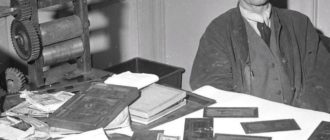
The Most Noble Order of the Garter is the first secular award in world history, which largely determined the further development of the award system. The regalia owes its origin to the spiritual-knightly brotherhoods – paramilitary organizations that took an active part in the crusades. The Order of the Garter was created by King Edward III of Great Britain, who wanted to surround himself with loyal vassals, for whom the award of knighthood meant great honor and evidence of the king’s favor.

Main characteristics of the Order of the Garter:
Author: unknown.
Country: Great Britain.
Date of establishment: 1348.
Number of degrees: 1.
Chest chain size: 81.2 mm between arms.
Small sign size: 112 mm x 68 mm.
Star materials: gold, silver, rubies, diamonds.
Small sign materials: gold, silver, enamel, glass or diamonds.

Legends of the Order of the Garter
The Order of the Garter is an award associated with several legends. It is extremely difficult to confirm this or that version today, but historians have no doubt that the British king Edward III planned to establish an alliance of loyal vassals back in 1344. The monarch was preparing for war with France and announced the holding of a knightly tournament, where all the English nobility gathered. On the eve of the event, Edward even ordered the construction of an analogue of the legendary round table of King Arthur at Windsor Castle, but the construction was interrupted by hostile actions of the French – abandoning everything, the king went to fight.
The Order of the Garter appeared after the British victory at the Battle of Crecy, where France suffered a crushing defeat. Success inspired the king, and he finally strengthened his intention to encourage his glorious knights for the heroism shown in battles. Edward decided to create a community following the example of the spiritual brotherhoods of the crusaders with its own charter and privileges. As planned by the king, the alliance of the knights was to become a support in his opposition to the feudal lords, who at that time behaved very independently. It was only about the name of the new order.

According to one version, the king was inspired by the beautiful Countess of Salisbury.
Edward was her longtime admirer, but the monarch could not achieve reciprocity. After completing the construction of the round table in Windsor, the monarch announced a grand celebration, where he invited the object of his sighs. During the dance, the diamond-set garter from the countess’s stocking slipped to the floor. The courtiers who knew about the king’s sympathy laughed. In response, Edward lifted the garter, secured it on his own knee and said in Old French: “Let him be ashamed who thinks badly about it.” Following this, the king announced the creation of a new knightly union, and the phrase became his official motto.
Some historians doubt the veracity of this legend, since it does not look too serious in the realities of the time. According to one of the existing versions, the monarch borrowed the idea from Richard the Lionheart, who chose the blue ribbon as a symbol of his knights during the Crusades. It is also believed that the garter belonged to the king himself, who, at the Battle of Crécy, signaled to advance with it. At the same time, the meaning of the motto is associated with the controversial claims of the British monarch to the French throne.

First Knights of the Order of the Garter
The exact year of the establishment of the Order of the Garter is unknown. The event dates back to 1348, according to the first mention of ceremonial garters in the inventory of the king’s wardrobe. According to the charter, the organization was supposed to consist of no more than twenty-six knights.
Only nine of them belonged to the highest nobility, the rest were ordinary nobles who had proved their loyalty to the king. Among the first Knights of the Order were: Henry Grosmont, Duke of Lancaster (Henry of Grosmont) – an outstanding military leader and confidant of the king. Richard Fitz-Simon is Edward III’s standard bearer. Neil Loring is a simple nobleman who showed bravery in the Battle of Crecy. John Chandos is a talented strategist with no hereditary title.
Details of the order are found in the ancient Spanish novel Tirant lo Blanch, published in 1490.
The medieval author colorfully described the knighting ceremony, which took place in the Cathedral of St. George. Initially, the ceremonial attire consisted of a purple woolen cloak embroidered with the insignia of the order and a blue garter, which was supposed to be worn below the knee. In the 15th century, King Henry VII (Henry VII) ordered to supplement the garment with an order chain with the figure of St. George the Victorious, the patron saint of England, fixed on it.
The color of the clothes later changed to blue, and the robes were made of velvet. In the 16th century, the list of attributes was supplemented with a neck medallion, and a century later the eight-pointed star, which was supposed to be worn on the chest, entered the number of insignia. Unlike chains, signs were allowed to be trimmed with precious stones. The most famous manufacturers of the order’s attributes are the jewelry companies Rundell, Bridge & Rundell and Asprey & Garrard.
The Order of the Garter still exists in the UK award system. According to the charter, the Prince of Wales leads the organization, and the number of companion knights is still strictly limited. Membership is awarded personally by the reigning monarch for outstanding service to the state. Meetings of the order and solemn services are held annually on April 23 at St. George’s Church in Windsor.






